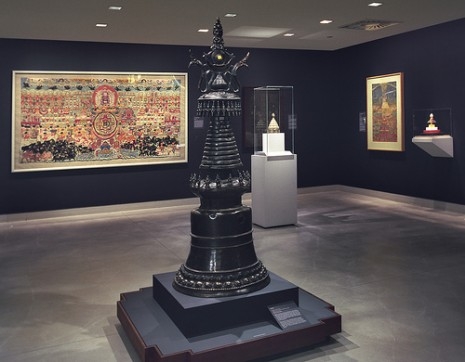
The Rubin Museum in NY, a formidable midtown institution dedicated mostly to preserving Tibetan thangkas (and a hell of a place to spend a day), has opened a new exhibit tracking mankind’s efforts at depicting the cosmos. Can’t think of a more impressive, or important topic for an art exhibit. (A lot less boring than another round of snooze-inducing works on “identity politics,” for f*k’s sake.)
In the Grilandus Inventum, a beautifully-preserved handwritten Italian book from 1506-07 currently on display at the Rubin Museum of Art in New York, there is a figure of a man surrounded by zodiacal signs. In his left hand, he holds an armillary sphere, a celestial sphere with the Earth at the center of the universe, in accord with pre-Copernican astronomy. Lines from the zodiacal signs connect to Zodiac Man’s body parts. The lesson is clear: man is governed by the cosmos.
The medieval manuscript depicting Zodiac Man is part of the Visions of the Cosmos exhibit, the Rubin’s examination of the ways in which humans have conceived of their place in the universe over the centuries.
Since antiquity, humans have pondered the meaning of the universe, crafting creation myths and cosmologies to explain the heavens: the seasonal change of the night sky, the movements of the planets, the beauty of the Milky Way. That the planets and constellations are somehow responsible for earthly affairs was a common theme to the cosmologies of many cultures.
Visions of the Cosmos also depicts Hindu, Jain and Buddhist worldviews through carefully selected works including 18th century Tibetan Buddhist scrolls, loose leaf Jain manuscripts from the 16th century, black stone Hindu statues from the 11th and 12th centuries.